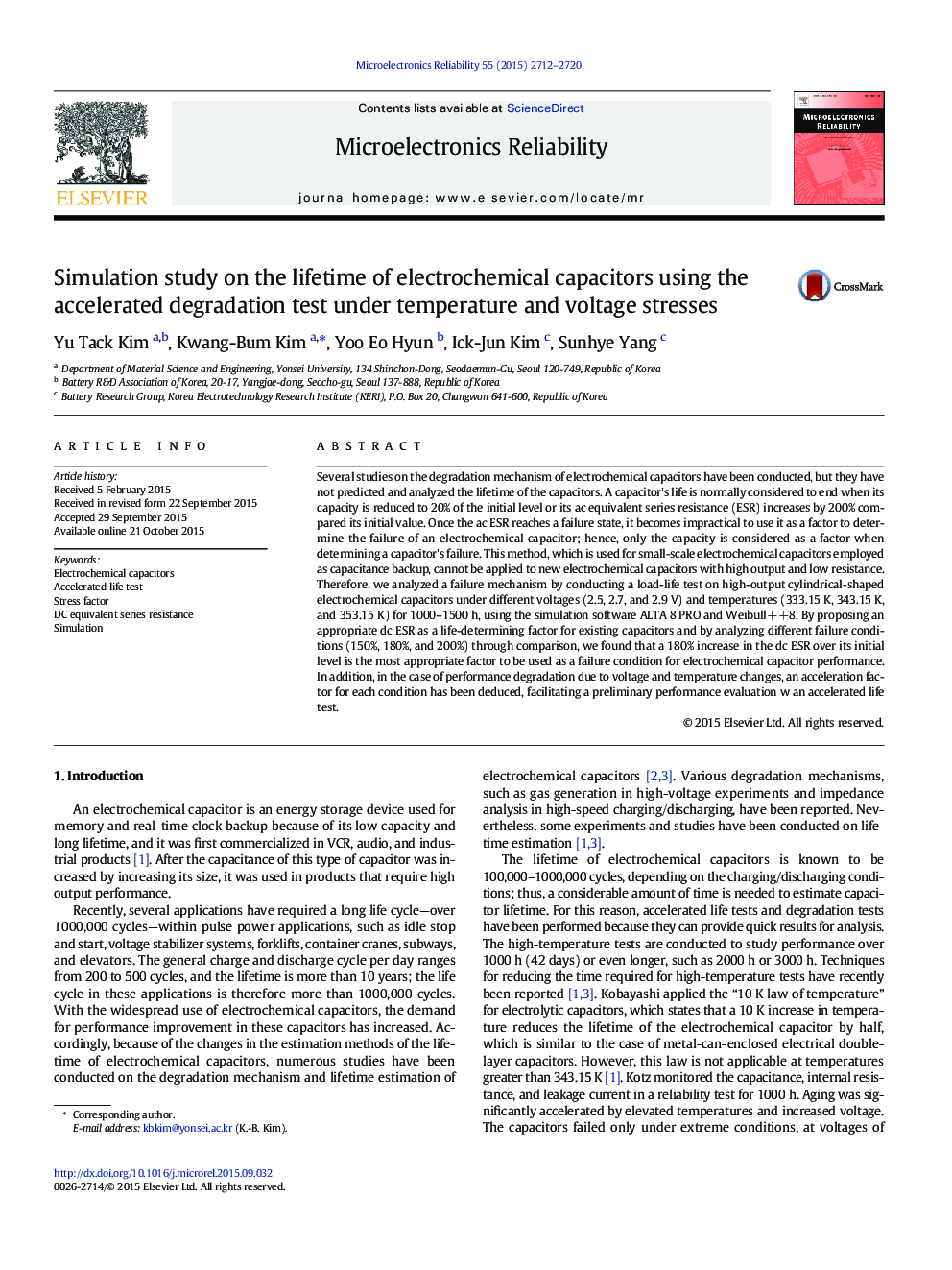| Article ID | Journal | Published Year | Pages | File Type |
|---|---|---|---|---|
| 544697 | Microelectronics Reliability | 2015 | 9 Pages |
•We analyzed a failure mechanism by conducting a load-life test on high-output cylindrical-shaped electrochemical capacitors under different voltages (2.5, 2.7, and 2.9 V) and temperatures (333.15 K, 343.15 K, and 353.15 K) for 1000–1500 h, using the simulation software ALTA 8 PRO and Weibull ++8.•From the AF values, we determine that at 2.5 V, the lifetime at 353.15 K is 8.278 times shorter than that at 298.15 K, and it reaches up to 201 times longer than this under the 2.7 V–353.15 K condition.
Several studies on the degradation mechanism of electrochemical capacitors have been conducted, but they have not predicted and analyzed the lifetime of the capacitors. A capacitor's life is normally considered to end when its capacity is reduced to 20% of the initial level or its ac equivalent series resistance (ESR) increases by 200% compared its initial value. Once the ac ESR reaches a failure state, it becomes impractical to use it as a factor to determine the failure of an electrochemical capacitor; hence, only the capacity is considered as a factor when determining a capacitor's failure. This method, which is used for small-scale electrochemical capacitors employed as capacitance backup, cannot be applied to new electrochemical capacitors with high output and low resistance. Therefore, we analyzed a failure mechanism by conducting a load-life test on high-output cylindrical-shaped electrochemical capacitors under different voltages (2.5, 2.7, and 2.9 V) and temperatures (333.15 K, 343.15 K, and 353.15 K) for 1000–1500 h, using the simulation software ALTA 8 PRO and Weibull ++8. By proposing an appropriate dc ESR as a life-determining factor for existing capacitors and by analyzing different failure conditions (150%, 180%, and 200%) through comparison, we found that a 180% increase in the dc ESR over its initial level is the most appropriate factor to be used as a failure condition for electrochemical capacitor performance. In addition, in the case of performance degradation due to voltage and temperature changes, an acceleration factor for each condition has been deduced, facilitating a preliminary performance evaluation w an accelerated life test.
